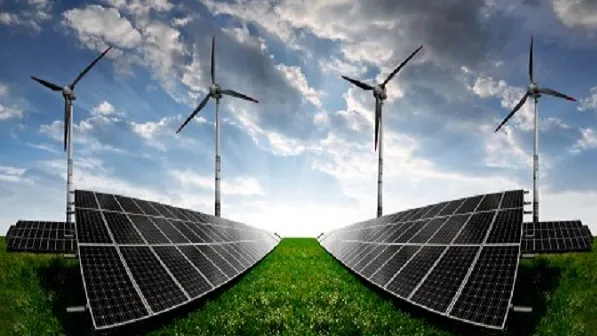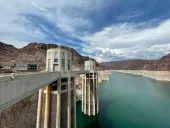
Renewable growth is grappling in South Korea
Could this be due to geographical barriers, prices, or the presidential elections?
Even if South Korea’s government, under President Moon Jae-In, has carved two pathways to take in reaching its carbon neutrality targets, analysts still expect the country’s renewable energy growth to remain slow. The culprit? The country’s lack of space for renewables deployment, high cost, and maybe even the presidential election.
The Presidential Committee on Carbon Neutrality had unveiled two new roadmaps to achieve carbon neutrality by 2050 with both frameworks calling for the abolition of coal-fired power generation. The roadmaps, however, differed over their direction in terms of liquefied natural gas (LNG) with one seeking to eliminate it, whilst the other opting to retain LNG with carbon capture technologies.
Despite phase-out plans for coal, Rystad Energy sees South Korea’s coal capacity increasing in the short term as additional coal power units are currently under construction; whilst natural gas, which has a much lower carbon footprint, is projected to become its largest power source by the late 2020s.
“When it comes to renewable development, South Korea has been lagging compared to its peers,” Rystad Energy Analyst Fabian Rønningen said.
Renewable barriers
According to Rystad Energy, amongst the key factors behind the slow development of renewable energy in South Korea is its geography. Largely consisting of mountains with small valleys and narrow coastal plains, South Korea offers very little space for the deployment of renewable energy sources, such as solar and wind power.
On top of this, spaces that could potentially be suitable for renewable energy sources are already densely populated, making it even difficult for the country to transition.
“That is one of the reasons the country has put so much emphasis on the development of hydrogen and ammonia use in the power sector, as already existing infrastructure can be used, and thermal power plants have a much smaller footprint than large scale solar and wind farms,” Rønningen said.
Fuel mixing with less polluting fuels, like biomass, is a solution to reduce the damage caused by operating coal-fired power plants. In South Korea, ammonia mixing in coal-fired power plants is expected to become increasingly more important as the country set a “very ambitious” target to generate 22 terawatt-hour through ammonia by 2030. “The pathway to this is yet to be seen,” he said.
The Lantau Group partner, David Kim, based in Seoul, likewise raised South Korea’s natural environment as “not very favourable” for the deployment of solar photovoltaic and wind generation. This is considering the high cost of land where new sources can be deployed as well as the weak insolation, which could in effect slow down the transition to cleaner energy sources, Kim said.
“But we cannot stop the shift. As more renewable energy is generated, the key issue will be how we manage and operate the electricity market in Korea,” Kim said.
“At the moment, the wholesale market and the retail market are not fully linked. There is a lack of price signals between generators and consumers, which disincentivise the improvements and the innovations in the energy market.”
Kim said that to attract more investments and talents, South Korea also has to devise a way to operate the electricity market in the long run.
Apart from geographic hurdles, South Korea also struggles with the cost of renewable energy sources, a challenge that most countries have now moved beyond. Despite this, the country has already made strides in renewables driving demand for coal and LNG down. Rystad Energy expects this to lead to a large reduction in emissions, but not quite enough to bring it down to zero.
“This is where green hydrogen and ammonia come into the picture,” Rønningen said, adding the Green New Deal and Ninth Basic Plan, as well as the proposed Emissions Trading Schemes, could help speed up renewables growth in the country.
“If the South Korean Energy Agency is arranging capacity auctions with larger volumes, a faster deployment can be achieved. The continued cost reduction of renewables, especially floating offshore wind in non-utility scale solar PV will help South Korea transition faster,” he said.
Presidential election
The presidential election in March is expected to have an effect on the direction the country will take in the clean energy transition.
“I believe that the goal for the greenhouse gas reduction and the clean energy transition will be firmly pursued in the long term view,” Kim said.
In a report, Fitch Solutions noted that the country’s policies over its clean energy transition will continue changing, particularly around nuclear energy as South Korea remains “politically divided” over the subject.
“As such, we are seeing increasing pressure around the continued need for nuclear power, which might be reintroduced in a new administration, presenting some upside risks to our current outlook,” according to Fitch Solutions.
“Nonetheless, there remain significant uncertainties around South Korea’s future power mix, and we will continue to monitor developments closely and revise our forecasts accordingly if necessary.”
South Korea’s power mix
South Korea’s energy sector largely consists of imported fossil fuels such as oil, coal and natural gas. The country is also known for being amongst the largest power sectors, dominated by coal, gas, and nuclear, he said.
At present, South Korea targets to keep the share of natural gas down to only 19.5% of its power generation; which Rystad Energy’s Rønningen sees as a difficult pursuit as natural gas is seen to have a higher share in 2022.
Coal accounted for the largest share in the current power mix, which is expected to decline amidst phase-out plans. Meanwhile, the nuclear output is expected to grow near-term with several new units in the pipeline, but will likewise play a reduced role in South Korea’s power sector in the long run as the country’s nuclear fleet ages. This will then leave South Korea to rely on other sources of power to meet the generation gap created by the reduced output from coal and nuclear power.
“Overall, the long-term expected reduction of both coal and nuclear means that other sources will need to meet power demand, and that is expected to be natural gas and renewables, such as solar, wind, hydrogen, and ammonia,” he said.
Early this year, the South Korean government published the K-Taxonomy, a new draft green taxonomy, which classified LNG as “green.” This opens opportunities for new LNG-to-power projects as the “green” classification qualifies these projects for green financing and tax incentives. The draft taxonomy, however, does not classify nuclear as “green.”
Fitch Solutions in a report said that the new classification could lead to a large number of new gas-fired power plants in the market, especially as ageing coal-fired power plants are replaced by gas. This could bring the share of coal down to 30.1% from 36.7% and the share of gas up to 30% from 26.7% of the power mix by 2031.
Rystad Energy’s Rønningen said the reduced role of coal and increase in gas will have a “drastic” impact on demand for both sources, especially considering South Korea has a relatively young fleet of coal-fired power plants. An important factor for coal in South Korea is the relatively young fleet of coal power. Phasing-out coal could pose risks of stranded assets for a large proportion of the power plants.
He added this could be addressed through refurbishment projects that allows fuel to switch from coal to natural gas directly. In contrast, the new classification could increase the demand for gas, which Rønningen said exposes South Korea to global energy markets, which has been a rollercoaster for all of 2021.
“Switching from coal to gas would result in a deep cut in emissions and depending on the future pricing in the gas and coal will reveal if it is also the correct financial decision if costs of electricity will rise as a result in South Korea,” he said.



















 Advertise
Advertise






